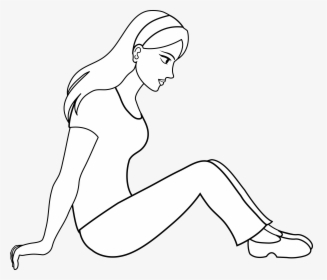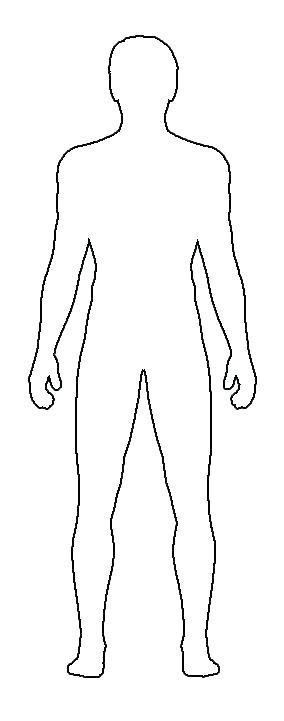Person Outline Sketch
Click herefor the Blinder Drawing Game | Learningto Draw bylearning the basic seeing and drawing skills needed to draw everything an essay by Marvin Bartel, Ed.D. ©2003 For a related essay see: MotivatingNon Drawers |
WHATSKILLS ARE NEEDED TO DRAW
EVERYTHING?
edges | cross contour | sizeangle proportion perspective | shading | negative space |
holistic gesture seeing and drawing | color | pattern texture

Mar 2, 2013 - This Printable Blank Faces is free for you today to print out! Dec 31, 2020 - Explore Alicia Stewart's board 'Sitting - Pose Reference', followed by 675 people on Pinterest. See more ideas about drawing poses, art reference, sitting pose reference.
Once students learn these skills, they can draw anything thatthey canobserve. I recently ran across and old tape and enjoyed listeningto a talk by Betty Edwards atCalvinCollege in the 1980's. Among other things, she lists some skills thatareneededto be able to draw. This list of observation skills isinspiredby hearing her ideas about things that students need to learn to see inorder to observe and draw better. Visual observation is believed to bein the domain of the right side of the brain. Intuitive and creativethinking are also believed to be in the domain of the rightbrain. The leftbrain deals with the rational, the alphabet, numerals, and so on. Left brain thinking is linear - one thing after another. The rightbrainprocesses everything at once.Free Sketches To Print
1
Below: With the blinder still on their pencils, they draw the rabbit's outline (see result below). When it moves, they continue drawing. They follow the movement. The poor left brain gives up and goes home. This is right brain practice. It is a fun activity and it builds knowledge and confidence about how to draw. |

Left:Here the model is wrapped in dayglow orange to create an easy way toseecross contour. In this session students are instructed to draw only the ribbon. Black compressed charcoal is quick andexpressive. Thismethod makes observational figure drawing less frightening and easier.This method makes it impossible for the left brain to impose a standardsaved 'person image'. Nobody reverts to a 'stick person'. The leftbrainbows out and the right brain gets a chance to get some practice andconfidence. howto see sizes - angles - proportions |
A viewfinder is another useful sighting device to help see the angles and proportions of things being observed. This category includes linear perspective which can be learned by making careful comparisons of sizes and angles. By using two sticks (like chop sticks, pencils, or rulers) and holding one in line with a vertical corner and crossing it with another stick that lines up to a horizontal line, students can draw in perspective and learn to observe the principles of linear perspective. The sticks must be kept together in the observed position while placing them on the paper and transferring the observed angles to the paper.
| Above:Suzi Arsenovicusesa ruler to makesightings of an aluminum table by sculptor John Mishler |
To draw well, students need to learn to see highlights,shading, andcast shadows. Directional light on still life objects that arepaintedall white and placed on white makes shadows and shading easier tosee. I require them to first find the lightest part and keep that area ofpaperwhite. They then find darkest areas. Then middle tones,etc. I ask them to use a light pencil outline around the shape of thehighlight. Then students add ball-point hatching and cross-hatching fortone. When finished they must erase thepencil to see the form without theoutlines. The watercolor painting below shows this. If they include somenegativespace tone, the drawing will pop out without the artificial outlines. |
Studentdraws a pebble with pencil - shades it with ball-point - then erasesthepencil. |
howto see negative spaces - negative shapes
To draw well, students need to learn to see negative shapes andspaces. I tell students that good objective seeing requires that we get overourprejudices. Out left brain is prejudiced to be practical andignorethe negative spaces. We learn to pay attention to things thatmighteffect us and we ignore the empty space. To teach about negativespace, I ask them to draw only negative (background) areas. Positiveparts are sometimes added after the negative parts are all finished. Aviewfinder is helpful to give definition by framing the space.One assignment has them looking at winter tree branches andonly drawingthe sky shapes between the branches. They may not draw any of theoverlapping crossing lines of the branches. If any extra linesare included, they are asked to erase them.
Another assignment has a bunch of sunflowers in a vase placesin frontof a dark brown or black paper background. Viewfinders are usedbythe students to frame compositions tightly limiting the amount ofnegativespace showing. Students are asked to use a soft lead drawingpencilto gesturally tone in the dark background first, then tone in the valueof the green leaves and stems (middle tones), and lastly definethetone and patterns of the centers of the sunflowers, leaving the yellowflower petals the color of the paper with nearly no tone and only a bitof outlining of the petals, paying special attention to some deformedorsomewhat mutilated petals. Using pale yellow paper might lend itself tothis drawing. A Vincent van Gogh sunflower painting could bestudied afterstudents have finished this drawing.
By changing their habits of work students can learn how toacquire newskills. Students learn how to learn to acquireobservationskills because they now know how to practice on their own time. For this reason I refrain from demonstrating these techniques for theclass. Instead, I assign preliminary practice routines. Ido not want them to feel that they need an expert artist tofigure out how things look. It is more important that they needto learn how to figure things out themselves.
how to see holistically & draw expressively
Free Printable Person Outline
GESTURE drawing practice helps us learn to see and express more holistically and globally, but it is still very observational, even as it is highly emotional. While gesture drawing, we practice trying to see and capture everything at once. We avoid outlines all together, starting in the heart of the thing being observed and portray its overall essence as instantaneously as possible. The Gesture Drawing Dance section of Motivating Non-Drawing Students has more specific methods of teaching gesture drawing. Also see the Inside-Out Gesture section of Portrait and Figure Drawing. In my opinion, some the strongest drawings by artists like Kollwitz and Rembrandt use an inspired combination of gesture and contour. Of course, I would never show these to students prior to their practice. An inventive and creative mind is not nurtured by imitating experts. It is nurtured by playing, experimenting, discovering, and expressing its own observations and its own feelings--not those seen in another artist's picture. As a teacher, I am challenged by seeing the work of these great artists. I want to find ways for my students to practice and learn the kind of routines that rehearse these skills of direct immediate observation, of rich imagination, of memory, of feeling, and of expressive drawing skills. I use my imagination as an artist to experiment with ways for students to practice and so they can learn to see and express themselves more like artists do (from within based on what they observe, feel, think, imagine, and so on).
how to see color
Although color is not always associated with drawing, it can lenditselfto similar right brain practice. Color also provides its ownexcitementand sensory motivation. When learning observation, I ask studentsto observe specific color changes created by lighting and reflectedlight. A red reflector card placed near a still life set up will create adifferenteffect than a blue reflector card. Colored filters and coloredlightsare also useful. This category can include atmosphericperspectivewhich can be observed if distant colored objects can be compared withsimilarcolored close-up objects on location in a landscape setting.Before the lesson Inthe preliminarypreparation students experiment with color mixing without any visualguide. They are asked to wet areas by brushing water on the paper while notlookingat the paper. During this part they are observing the negativeshapesbetween the fingers of their opposite hand being held in front of theirfaces. Thisis a preliminary study on a small piece of watercolor paper. Studentsare given specific verbal instructions about how to wet the paper whilelooking at their opposite hand being held in front of them. Onlythe negative spaces are wet and only the negative spaces are colored inthis picture. The dry area are sometimes used for comparison, fordrybrush, and so forth. Inever demonstrate this. They must each do it individually from verbal instructions. Nocolorchartsare shown. Color charts are avoided because they are shortcuts (like answer sheetsin math) that do not teach thinking, experimentation, and 'how tosolve problems'. The best time to show the color chart is afterthey have finished their paintings. At that point they can seethe rationale for the colors on the chart. If they were to use achart as a guide, how would they learn to solve problems byexperimenting? | A one-hourwatercolor of a carrot, squash, To make color mixingessential, I select food items in the produce department that arenatural secondary colors. There are many green, brown, purple, and orange veggies. This food used after the lessonin my soups, stews, and salads. Students who ask are allowed toselect one piece to eat or to take home. For thepaintingthe vegetables for observation are arranged by the students themselves.They are encouraged to taste and smell. This provides rich multi sensory motivation. Plasticfake foodsoffer none of this. LESSONLIMITATIONS
|
howto see patterns and textures
To draw well, students need to learn to observe patterns and textures. This can be practiced by drawing wood grain, ears of corn, close up views of fabrics, or a pile of nearly anything. Repeat pattern and texture are often similar to each other, but pattern has larger units. Texture ads richness to surfaces. Pattern insists on being seen and can produce great eye movement in a composition by virtue of repetition.
Howto establish a practice routine
Some teachers start nearly every class session with a ritual orpracticedrill of observation drawing. Using these seven skills gives these drawing warm-ups variety. If you can think of anything that should be added to this list ofobservationskills, please share them. If you have any lessons that work wellto teach one these skills, let me know what it is. See Ritualsin the Art Classroom
Learningby limiting
Lessonswithoutlimitations are not very effective. Without limitations, studentsare prone to fall back on easy left brain habits and fail to practicenewor difficult skills. We naturally avoid the risk of doing the unknown unless a good teacherassures us that the new way can help us grow. Well planned lessonlimitations make it harder for the left brain to dominate whileencouragingthe right brian to practice.
On theother hand,children who are encouraged and limited to follow patterns, color inotherpeople's lines, do copy work, or assemble pre designed projects arelearningskills that would be desirable in a society that needs lots of slaves. Teaching from 'how to draw it' books and by assigning copyworkandpatterns can be done by clerks. Anybody can handouthandwork. In a society that needs self-motivated decision makers, their studentswill grow up to suffer 'learned helplessness'. Good lessonlimitationsrequire individual learning of new skills, compositional and contentchoicemaking, challenging thinking tasks, and prohibition of stereotyping andprejudices. See thislink for more ideas on making it harder for the left brain topreventthe education of the right brain.
|
|
|
|---|